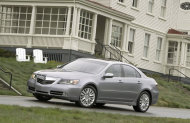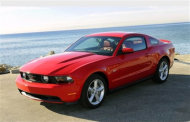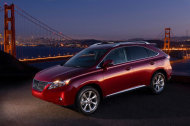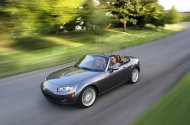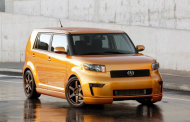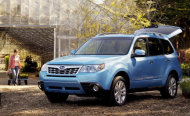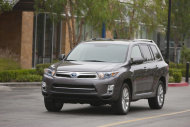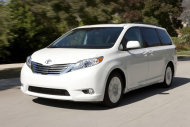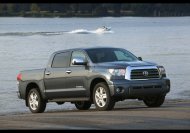Lewis
Member
For most cost-conscious consumers, keeping a car running for as long as possible is a financial issue – it’s typically cheaper to repair a car that’s otherwise in serviceable condition than it is to make payments on a new one. For others, however, it’s a mission. Case in point is Irv Gordon of East Patchogue, New York, who holds the Guinness world record for racking up the highest mileage in the same vehicle. At last count he’s clocked over 2,900,000 miles on the Volvo 1800 S coupe he purchased back in 1966 and is aiming for a cool three million. If you’ve ever seen it, it looks like a museum piece, which is a testament to Gordon’s meticulous care.
Trivia buffs know the Volvo 1800 S as Roger Moore’s ride of choice as adventurer Simon Templar in the TV series “The Saint†back when the car was new, but you don’t need divine intervention to wring the most miles possible out of your automotive investment. With proper maintenance and timely replacement of worn parts just about any of today’s cars and trucks can stay on the road for 200,000 miles or more. This is enabling American motorists to hold onto their rides for longer than ever – the average passenger vehicle on the road today is 10.6 years old, according to the Car Care Council.
For those with an eye on owning a car or truck for the long run, we’ve identified a list of 14 model-year 2012 vehicles that are statistically among the least likely to encounter major mechanical problems in at least the first several years of ownership. Our list consists of 14 cars and trucks that received top scores in both the most-recent Consumer Reports Car Reliability survey, based on problems reported by 1.3 million owners of model-year 2005-2010 vehicles, and the J.D. Power and Associates U.S. Vehicles Dependability Study based on responses from more than 43,700 original owners of 2008 model-year vehicles.
We also consulted repair-cost predictions from Intellichoice.com to ensure that any of the cars and trucks in our “200,000 mile club†would not become prohibitively costly to keep running once parts needed replacing. And at that, we chose models that, for the most part, “keep it simple,†and (at least in their base models) eschew complex gadgetry that could require expensive repair or replacement down the road.
Our picks include budget-minded small cars like the Honda Fit and Scion xB, stalwart sedans including the Acura RL and Lincoln MKZ, sporty cars like the Ford Mustang and Mazda MX-5 Miata, purposeful people-movers such as the Subaru Forester and Toyota Highlander and tough trucks including the Toyota 4Runner and Tundra models. While most of the models on our list are from Asian automakers, based on past model-year performance, we expect additional domestic models to make CR and J.D. Power’s most-reliable lists in the years to come.
Of course, no matter which model a motorist ultimately chooses, only a well-maintained car or truck will last long enough to go the distance. The road to 200,000 miles begins with following the automaker’s maintenance schedule to the letter, particularly during the first few years of ownership to prevent voiding the vehicle’s warranty. Have the oil and filter changed according to the automaker’s so-called “severe use†schedule, which by definition applies to those who frequently drive in stop-and-go traffic, live in extremely hot or cold climates or dusty areas or who tow a trailer (which accounts for the majority of motorists).
What’s more, astute owners need to take a proactive attitude toward car care that reaches beyond the occasional trip to the shop. This means opening the hood and perhaps even getting your hands dirty from time to time. For starters, check all of the vehicle fluids regularly – including engine oil, coolant and brake, power steering and transmission fluids – and top them off as necessary. Your car’s owner’s manual will show where and how to check them. If any fluid levels are chronically low, have the car examined by a technician.
Inspect the hoses and belts regularly. Have them replaced whenever they appear cracked, brittle, frayed, become loose or show signs of excessive wear. Check the level of fluid in the battery at least once a month; it typically resides under a removable plastic cover to the left or right of the engine. Either remove the battery caps or look through the small “window†provided for this purpose. If the fluid level is low, top it off only with distilled water. Keep the terminals clear of corrosion to ensure a good connection using a soft wire brush dipped in ammonia or baking soda, then flush with clear water.
Check the air pressure in the tires – including the spare – weekly, and only when the tires are cold (before driving), using a good-quality tire-pressure gauge. Keep them inflated to the maximum pressure recommended in the owner’s manual. Check the tread depth periodically by placing a penny head first into the tread; if any part of Lincoln’s head is visible it’s time for new tires (contemporary tires also include built-in tread wear indicators that appear as horizontal stripes running perpendicular to the tread when they need replacing). Have the tires rotated once a year, or sooner if they begin to show signs of uneven wear.
Pay attention to the way your car drives. Take your car to the service department or repair shop if it’s making strange sounds, is becoming difficult to start, is handling or braking oddly, is overheating or otherwise isn’t operating as expected. Undue procrastination may lead to higher repair bills down the road.
Also, be sure to take care of your ride’s appearance to ensure it ages gracefully from an aesthetic point of view. Have the car washed frequently, waxed at least once a year with a good-quality paste wax and keep the interior looking good with liberal use of plastic-surface conditioner. Dirty seats and carpeting wear out quicker, so be sure to vacuum the interior regularly and freshen it annually with carpet/upholstery cleaner.
Unfortunately, even a meticulously maintained car or truck will need to visit the repair shop from time to time as the miles pile up. Batteries, tires and brake components, for example, usually last no more than a few years at a time before wearing out. Bigger-ticket items that usually need replacement at or near the 100,000-mile point often include an engine’s computer-control unit, timing belt, fuel pump, water pump, alternator and starter, as well as the vehicle’s muffler and exhaust pipes, power-steering pump and universal or CV joint. As a car approaches its “golden years,†it’s a good idea to budget a certain amount of money each year for such repairs to keep a car running in top shape.
Have a car that’s still looks and runs great after 200,000 or more miles? Leave a comment and let us know about it.
http://us.lrd.yahoo.com/_ylt=AsEWVJ...hmk45fhef/acura-rl#content?partner=yahooautos
Trivia buffs know the Volvo 1800 S as Roger Moore’s ride of choice as adventurer Simon Templar in the TV series “The Saint†back when the car was new, but you don’t need divine intervention to wring the most miles possible out of your automotive investment. With proper maintenance and timely replacement of worn parts just about any of today’s cars and trucks can stay on the road for 200,000 miles or more. This is enabling American motorists to hold onto their rides for longer than ever – the average passenger vehicle on the road today is 10.6 years old, according to the Car Care Council.
For those with an eye on owning a car or truck for the long run, we’ve identified a list of 14 model-year 2012 vehicles that are statistically among the least likely to encounter major mechanical problems in at least the first several years of ownership. Our list consists of 14 cars and trucks that received top scores in both the most-recent Consumer Reports Car Reliability survey, based on problems reported by 1.3 million owners of model-year 2005-2010 vehicles, and the J.D. Power and Associates U.S. Vehicles Dependability Study based on responses from more than 43,700 original owners of 2008 model-year vehicles.
We also consulted repair-cost predictions from Intellichoice.com to ensure that any of the cars and trucks in our “200,000 mile club†would not become prohibitively costly to keep running once parts needed replacing. And at that, we chose models that, for the most part, “keep it simple,†and (at least in their base models) eschew complex gadgetry that could require expensive repair or replacement down the road.
Our picks include budget-minded small cars like the Honda Fit and Scion xB, stalwart sedans including the Acura RL and Lincoln MKZ, sporty cars like the Ford Mustang and Mazda MX-5 Miata, purposeful people-movers such as the Subaru Forester and Toyota Highlander and tough trucks including the Toyota 4Runner and Tundra models. While most of the models on our list are from Asian automakers, based on past model-year performance, we expect additional domestic models to make CR and J.D. Power’s most-reliable lists in the years to come.
Of course, no matter which model a motorist ultimately chooses, only a well-maintained car or truck will last long enough to go the distance. The road to 200,000 miles begins with following the automaker’s maintenance schedule to the letter, particularly during the first few years of ownership to prevent voiding the vehicle’s warranty. Have the oil and filter changed according to the automaker’s so-called “severe use†schedule, which by definition applies to those who frequently drive in stop-and-go traffic, live in extremely hot or cold climates or dusty areas or who tow a trailer (which accounts for the majority of motorists).
What’s more, astute owners need to take a proactive attitude toward car care that reaches beyond the occasional trip to the shop. This means opening the hood and perhaps even getting your hands dirty from time to time. For starters, check all of the vehicle fluids regularly – including engine oil, coolant and brake, power steering and transmission fluids – and top them off as necessary. Your car’s owner’s manual will show where and how to check them. If any fluid levels are chronically low, have the car examined by a technician.
Inspect the hoses and belts regularly. Have them replaced whenever they appear cracked, brittle, frayed, become loose or show signs of excessive wear. Check the level of fluid in the battery at least once a month; it typically resides under a removable plastic cover to the left or right of the engine. Either remove the battery caps or look through the small “window†provided for this purpose. If the fluid level is low, top it off only with distilled water. Keep the terminals clear of corrosion to ensure a good connection using a soft wire brush dipped in ammonia or baking soda, then flush with clear water.
Check the air pressure in the tires – including the spare – weekly, and only when the tires are cold (before driving), using a good-quality tire-pressure gauge. Keep them inflated to the maximum pressure recommended in the owner’s manual. Check the tread depth periodically by placing a penny head first into the tread; if any part of Lincoln’s head is visible it’s time for new tires (contemporary tires also include built-in tread wear indicators that appear as horizontal stripes running perpendicular to the tread when they need replacing). Have the tires rotated once a year, or sooner if they begin to show signs of uneven wear.
Pay attention to the way your car drives. Take your car to the service department or repair shop if it’s making strange sounds, is becoming difficult to start, is handling or braking oddly, is overheating or otherwise isn’t operating as expected. Undue procrastination may lead to higher repair bills down the road.
Also, be sure to take care of your ride’s appearance to ensure it ages gracefully from an aesthetic point of view. Have the car washed frequently, waxed at least once a year with a good-quality paste wax and keep the interior looking good with liberal use of plastic-surface conditioner. Dirty seats and carpeting wear out quicker, so be sure to vacuum the interior regularly and freshen it annually with carpet/upholstery cleaner.
Unfortunately, even a meticulously maintained car or truck will need to visit the repair shop from time to time as the miles pile up. Batteries, tires and brake components, for example, usually last no more than a few years at a time before wearing out. Bigger-ticket items that usually need replacement at or near the 100,000-mile point often include an engine’s computer-control unit, timing belt, fuel pump, water pump, alternator and starter, as well as the vehicle’s muffler and exhaust pipes, power-steering pump and universal or CV joint. As a car approaches its “golden years,†it’s a good idea to budget a certain amount of money each year for such repairs to keep a car running in top shape.
Have a car that’s still looks and runs great after 200,000 or more miles? Leave a comment and let us know about it.
http://us.lrd.yahoo.com/_ylt=AsEWVJ...hmk45fhef/acura-rl#content?partner=yahooautos






